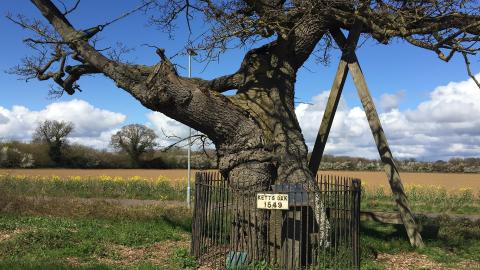Expanding London's Docks
As you beheld the white cloud of the railway engine… and looked down the endless vista of masts that crowded each side of the river, you could not help feeling how every power known to man was used to bring and diffuse the riches of every part of the world over this little island.
Henry Mayhew, The Morning Chronicle Survey of Labour and the Poor, Vol IV
By the nineteenth century, the volume of trade on the River Thames and the increasing size of ships meant that London's port needed to move down river to wider and deeper shores. Unloading mid-river or in the quays was getting difficult and dangerous, with collisions frequent and plundering rife. And, as London and its empire grew, it needed its port to grow too.
So, during the nineteenth century, private companies built a huge complex of docks in London. By the time Victoria became queen, several docks had already been built or expanded, the first new one being the West India Docks at the Isle of Dogs in 1802. Each dock was built for a specific purpose. For example, the West India Docks was restricted to sugar and other imports of the West Indies trade, and had sole rights to export back there. The Millwall Docks, which opened in 1868, were set up for the unloading of cheap foreign grain that poured into Britain after the repeal of the Corn Laws.
Further down the river, the last docks within the boundaries of London were the Royal Docks. These included the Royal Victoria (1855) and the Royal Albert (1880). The Victoria Dock was the first to be linked to the new railways, with rails running along its quays. At 1.75 miles long, the Royal Albert Dock was specially designed to accommodate the large iron and steam ships that were replacing sailing ships. Together, the Victoria and Albert Docks made a giant artificial waterway across East and West Ham.
Even further downstream, the Tilbury docks in Essex were opened in 1886 by the East and West India Dock company – the last great docks built by private enterprise. The downside of the expansion of the docks was the exploitation of the workforce. Immigrants came in from Ireland and abroad, as well as workers from the countryside, providing a constant supply of labour. They were housed in terrible conditions and set to work for long hours with poor wages.
The problem was compounded by the fluctuating workload, itself caused by unpredictable arrivals of the ships, as well as seasonal variations. Most labour was casual, with dockers employed by the day. Those who did manage to get any work found it to be dangerous and degrading. So it was no surprise that in the 1870s dockers went on strike, getting wages raised from four pence (1.7p: there were 12 pennies in a shilling and 20 shillings in a pound at that time) to five pence (2.1p) an hour. But it was the Great Dock Strike in 1889 that marked a new chapter in British trade union history. This time, skilled workers came out in sympathy for the casuals' successful demand for a 'tanner' or sixpence (2.5p) an hour and a minimum of four hours' work at a time.
Working conditions may have been poor, but London's docks were in the ascendant. By the end of the nineteenth century, they handled one third of all UK imports and played a major role in the Empire.
Did you know?
If you were paid the equivalent today of a casual docker's pay in 1889 you would be getting £1.50 an hour.
















